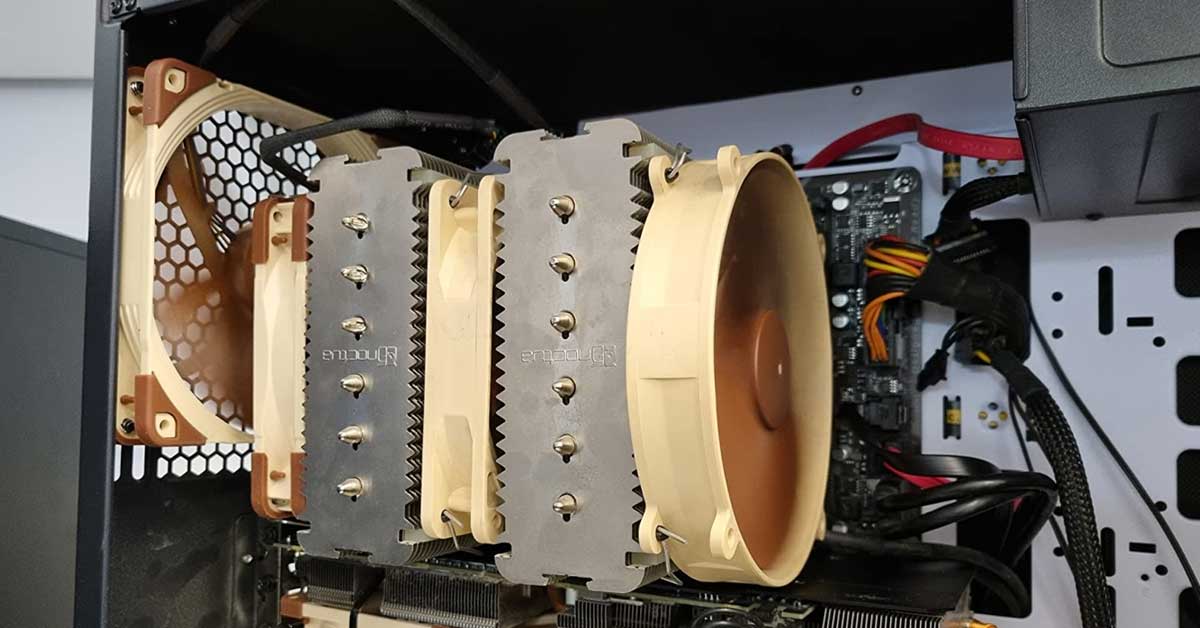Are your PC components feeling the heat? A 92mm case fan might be the compact cooling champion your system needs.
These fans are the unsung heroes in maintaining optimal temperatures within the cramped quarters of smaller cases or tight spaces in larger systems.
Serving as a critical component in preventing overheating, 92mm case fans ensure that your hardware runs smoothly without thermal throttling.
They balance airflow and acoustics, making them ideal for both performance rigs and silent workstations.
Here’s a quick look at our top picks:
| Feature | Noctua NF-A9 | be quiet! Pure Wings 2 | Thermalright TL-9015B | ARCTIC F9 | Scythe Kaze Flex RGB |
|---|---|---|---|---|---|
| Design/Thickness | Standard (25mm) | Standard (25mm) | Slim (15mm) | Standard (25mm) | Slim (15mm) |
| Max RPM | 2000 | 1800 | 2700 | 1800 | 2500 |
| Noise Level (Max dBA) | 22.8 | 19.6 | 22.4 | 36.4 | 23.2 |
| Airflow (CFM) | 46.44 | 43 | 42.58 | 43 | 41.3 |
| Bearing Type | SSO2 | Rifle-bearing | Not Specified | Fluid Dynamic Bearing | Sealed Precision FDB |
| PWM Control | Yes (4-pin) | Yes (4-pin) | Yes (4-pin) | No (3-pin) | Yes (4-pin) |
| MTTF/Lifespan (Hours) | >150,000 | 80,000 | Not Specified | Not Specified | 120,000 |
| Lighting | None | None | None | None | RGB |
1. Noctua NF-A9 92mm Case Fan
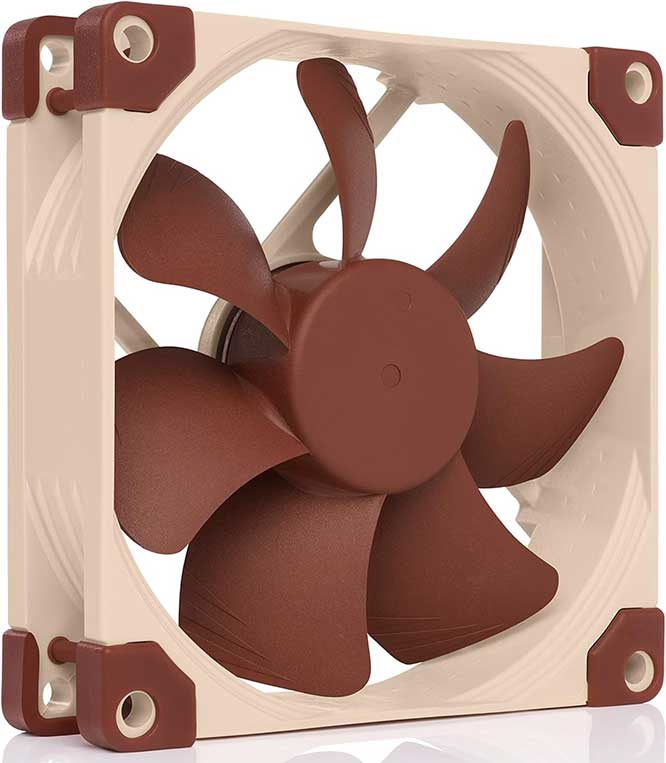
Key Takeaways:
- Exceptionally quiet at a max of 22.8 dB(A).
- Efficient airflow with Flow Acceleration Channels.
- Easy installation with extra cables provided.
- PWM control for automatic speed adjustment.
- Long-lasting with over 150,000 hours MTTF.
- 25mm thick.
The Noctua NF-A9 92mm case fan is a popular, premium choice. We swapped out an older fan that was on its last leg and were immediately struck by the drop in noise level.
It’s one thing to read about the maximum noise level of 22.8 dB(A), but it’s another to hear (or rather, not hear) the difference it makes in a quiet room. Especially, considering these fans are rated for 2,000 RPM.
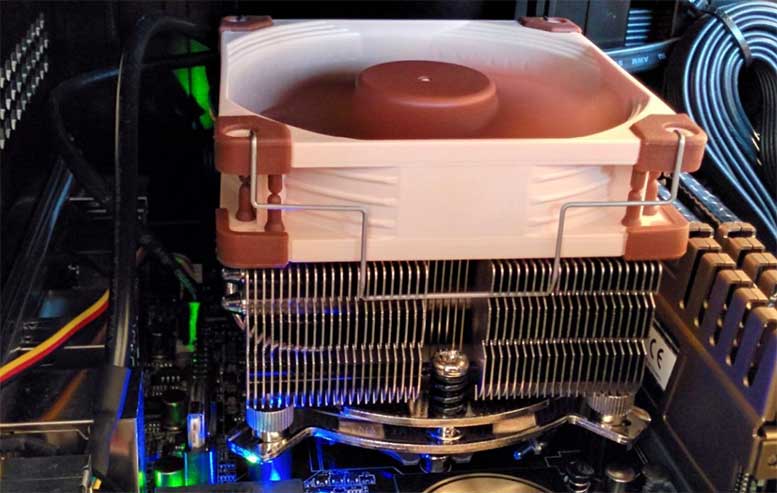
The Noctua NF-A9 didn’t just impress us with its whisper-quiet operation; the cooling performance was top-notch. In our setup, which includes 9cm CPU coolers and a range of compact PC cases, the fan moved air efficiently, thanks to its Flow Acceleration Channels.
The Advanced Acoustic Optimisation frame seemed to do its job well, as the fan ran smoother than a hot knife through butter.
We took full advantage of the 4-pin PWM control, which was like having an autopilot for our PC’s cooling system. The fan knew when to rev up and when to dial back, all without us having to tweak settings manually.
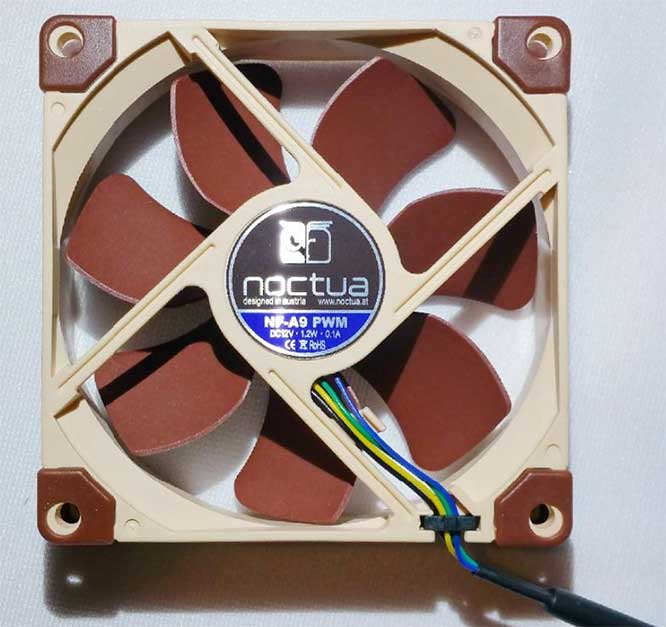
The inclusion of anti-vibration mounts was a nice touch, too – they helped cut down on any extra rattle that could disturb the peace.
Installation was a breeze, especially with all the extra cables and adapters included. We even put the Low-Noise Adaptor to use in a nearly silent PC build and were blown away by the results.
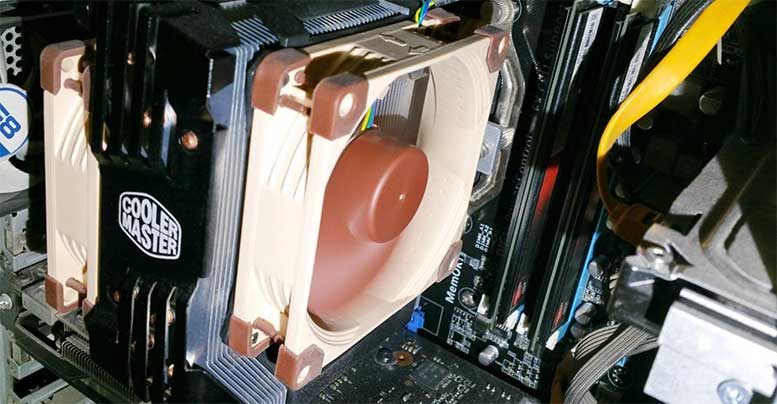
Other users seem to agree with our findings. Many have taken to using the Noctua NF-A9 to cool everything from graphics cards in custom setups to aging Power Macintosh G3 systems.
The consensus? This fan might come at a premium price, but it’s worth every penny for the performance and peace of mind it provides.
Plus, the longevity promised by the >150,000 h MTTF means you’ll be enjoying cool, quiet operations for years to come.
2. be quiet! Pure Wings 2 92mm Cooling Fan
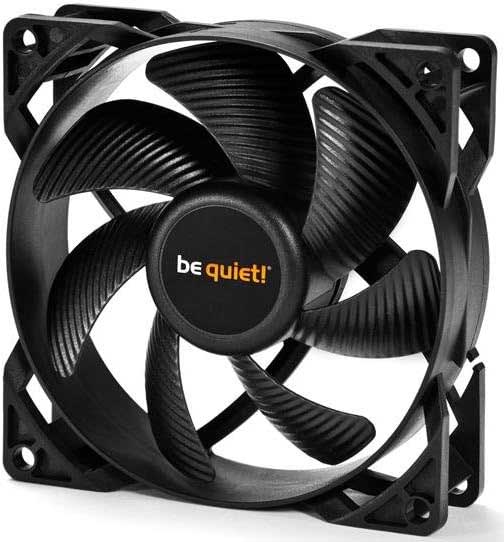
Key Takeaways:
- Operates quietly at only 19.6 dBA.
- 80,000 hours of long-lasting rifle-bearing operation.
- Seven blades optimized for less noise.
- PWM control for smart speed adjustment.
- Great performance with an affordable price.
- 25mm thick
When the be quiet! Pure Wings 2 92mm fan landed in our hands, we were keen to see how it would perform. Our goal was simple: to see if this fan could live up to its name in a real-world setting.
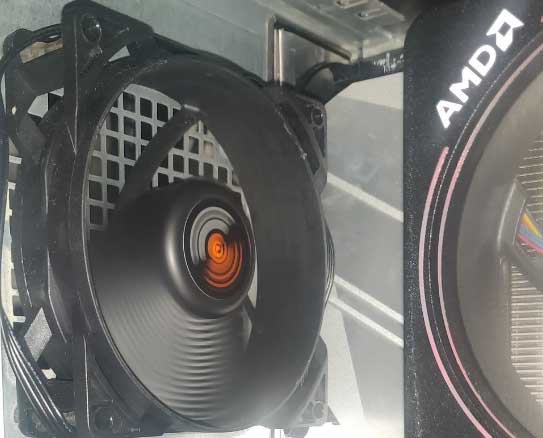
First off, we replaced the stock fan in our Cooler Master ITX case, notorious for its whirring, with this be quiet! model. The change was like night turning into day. Even at full tilt, the fan hummed along at just 19.6 dBA, quieter than our old fan at idle!
We then put the Pure Wings 2 to the test in a water-cooled setup. The seven airflow-optimized blades were supposed to cut down on noisy turbulence—and they did.
The fan kept things so cool and quiet, we had to double-check to make sure it was running. It was, just stealthily doing its job.
What’s impressive is the fan’s rifle-bearing design, which promises an 80,000-hour life. That’s a lot of gaming, streaming, and computing without a hitch. We haven’t reached those hours (yet!), but it’s comforting to know that the fan is built to last.
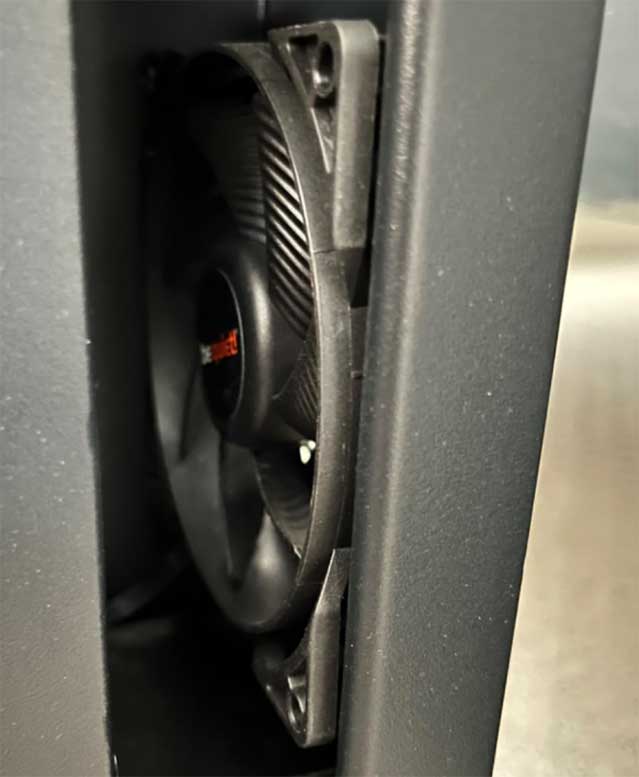
Using the PWM control through our motherboard was a snap. It adjusted the fan speed automatically depending on the system’s cooling needs.
Lastly, we can’t overlook the value. This fan costs less than some high-end models like Noctua but still offers premium performance.
Other users seem to agree, with many praising it for its quiet operation and good value for the price. It’s not just cute and well-made, but it actually drops temperatures significantly when replacing older fans.
The be quiet! Pure Wings 2 combines affordability with German-engineered reliability. It’s an understated workhorse, proving that effective cooling doesn’t need to come with a noisy fanfare or a hefty price tag.
3. Thermalright TL-9015B 92mm Slim Fan
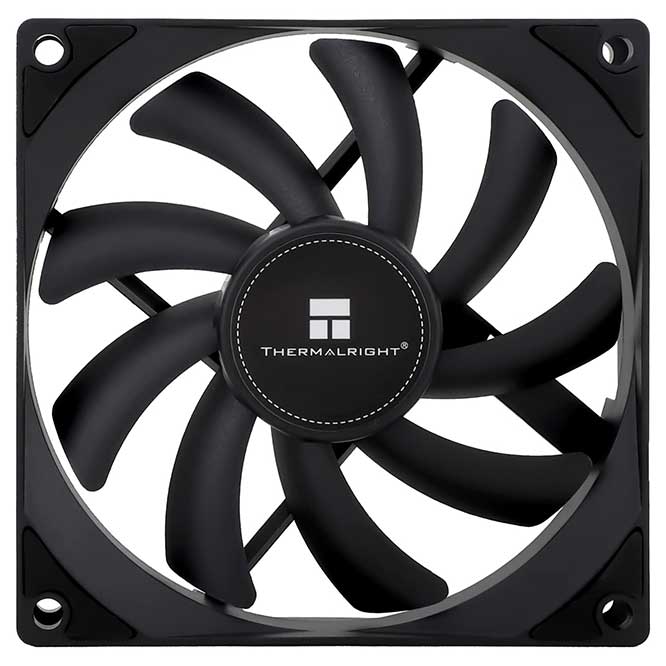
Key Takeaways:
- Slim design, perfect for small form factor builds.
- High airflow with 42.58 CFM.
- Noticeable noise at max RPM, quiet at medium.
- More affordable than most.
- Includes versatile mounting hardware options.
- 15mm thick.
When we first used the Thermalright TL-9015B 92mm fan, its slim profile caught our eye – perfect for the tight squeeze in a small form factor (SFF) build we were tinkering with. We needed a fan that could push air without bulking up the space. Per our initial tests, this fan’s promise of moving a hearty 42.58 CFM had us eager to see it in action.

We set it up as a top exhaust and watched the thermals as we fired up the system. The TL-9015B spun into action, and we could feel the air moving.
Compared to the Noctua we had on another build, Thermalright’s offering moved a notable 25.8% more air. That’s a big jump, especially when you’re trying to keep things cool under the hood of a gaming rig that’s running hot.
In the noise department, at full blast, the TL-9015B created 22.4 decibels of noise – making it the second quietest fan in this article, trailing slightly behind the be quiet! fan. That said, it didn’t make its presence anymore known more than others. But when we dialed it down to a gentle hum for everyday tasks, the difference was barely noticeable.
Users online seem to be nodding in agreement. They’ve slotted the TL-9015B into their setups and noted its effective airflow and good value, even if it gets a bit loud at the highest speeds.
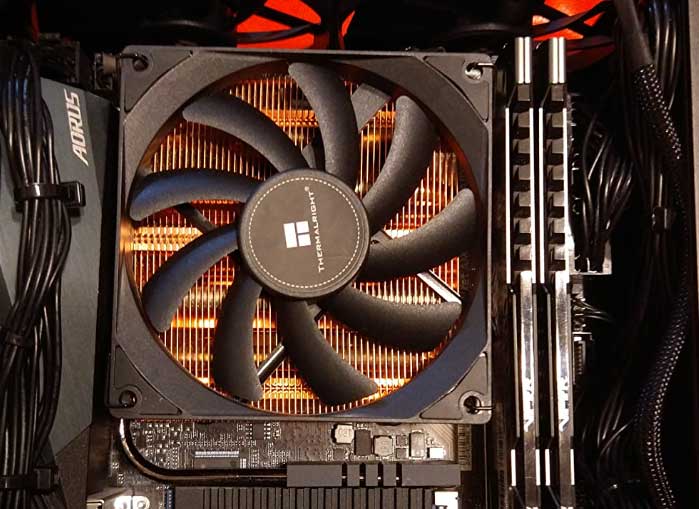
And let’s talk about installation. It comes with both machine screws and typical fan screws, giving you options that are a cut above the usual mounting hardware.
In our regular use scenario – think web browsing, streaming, and light gaming – the Thermalright fan held its own against the more expensive Noctua, keeping things cool without causing a ruckus.
For anyone building on a budget, the Thermalright TL-9015B is a strong contender. It punches above its weight in airflow, comes in at a lower price, and fits neatly into tight spaces. It’s a sensible choice for the cost-conscious builder who doesn’t want to compromise.
4. ARCTIC F9-92 mm Standard Case Fan
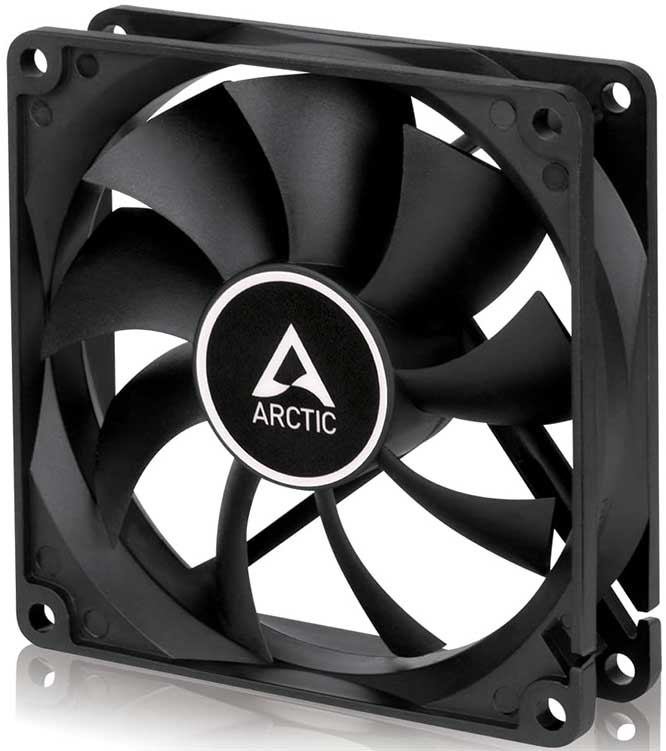
Key Takeaways:
- Inexpensive and efficient ventilation solution.
- Remarkably quiet with Fluid Dynamic Bearing technology.
- No PWM control with 3-pin connector.
- Good airflow at 43 CFM and 1800 RPM.
- Ideal for noise-sensitive environments and applications.
- 25mm thick.
When we got the ARCTIC F9-92 mm Standard Case Fan, we were curious about how it would perform, especially since it’s one of the least expensive options. We set up a unique scenario where we’d really put it to the test: a DIY composting toilet project that needed discreet but effective ventilation.
As soon as we powered it on, the fan’s quiet motor was immediately noticeable. It was tasked with keeping the air fresh, and it managed that without being noticeable.
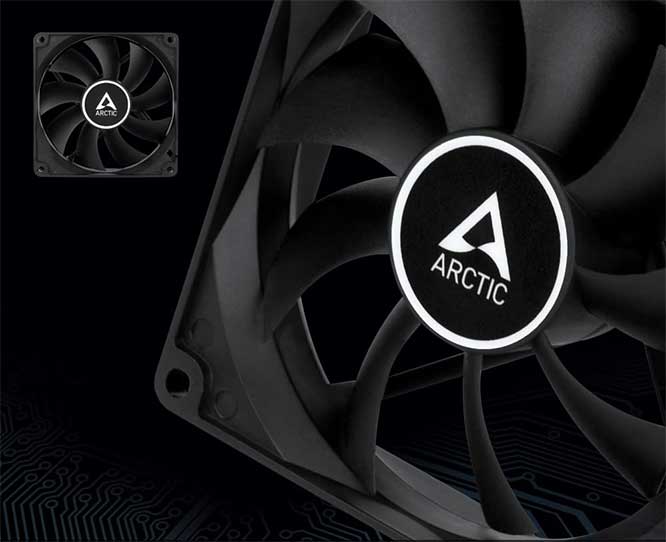
The Fluid Dynamic Bearing technology was likely responsible for this. It’s designed to keep things running smoothly without the noise or the need for frequent maintenance. And true to their word, there wasn’t a hint of lubricant leakage – a common issue with lesser quality fans.
The technical specs looked good on paper – 1800 RPM and 43 CFM of airflow are nothing to scoff at in a 92mm fan. In practice, these numbers translated into a steady stream of air that kept things cool without any fuss.
It’s a 3-pin fan, so we didn’t have the luxury of PWM control, but at a constant 1800 RPM, it managed a balance between noise and performance.
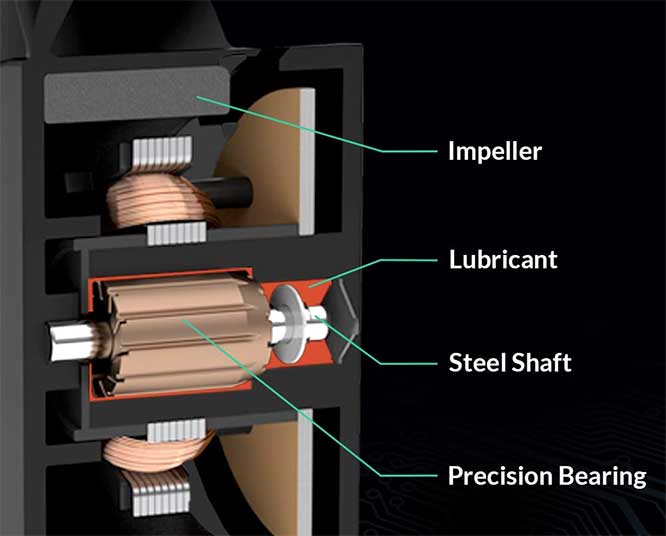
Other users seem to have found similar success, with reviews praising its whisper-quiet operation and effectiveness. One user even replaced an old, grinding fan in an HP Victus computer and found the ARCTIC fan to be a smooth operator, dropping the system’s noise down to nearly inaudible levels.
However, it’s not without its limitations. One user reported that it wasn’t quite up to the task of cooling a Tesla P40 under full load, which is a good reminder that while the ARCTIC F9 is a solid performer, it may not be cut out for extremely high-temperature situations.
All in all, the ARCTIC F9 fan is a great fit for those looking for a no-frills, quiet, and efficient fan. It’s especially ideal for applications where steady airflow and noise reduction are key.
5. Scythe Kaze Flex 92mm Slim RGB Fan

Key Takeaways:
- RGB lighting syncs with compatible motherboards.
- Quiet operation with Sealed Precision FDB.
- Good airflow range up to 41.3 CFM.
- Anti-vibration pads reduce noise and movement.
- Slim 15mm profile.
For those who like bright colors, the Scythe Kaze Flex 92mm Slim RGB Fan is a great choice. The first thing we noticed was how the fan’s slim profile, 15mm thick, just like the Thermalright. Add the anti-vibration rubber, and you’re only at 16mm, a perfect fit for tight spaces.
Once installed, the RGB lighting brought the interior of the case to life. The LEDs weren’t just bright; they were consistent, casting an even glow that could be synced with the motherboard to create a dynamic light show inside.
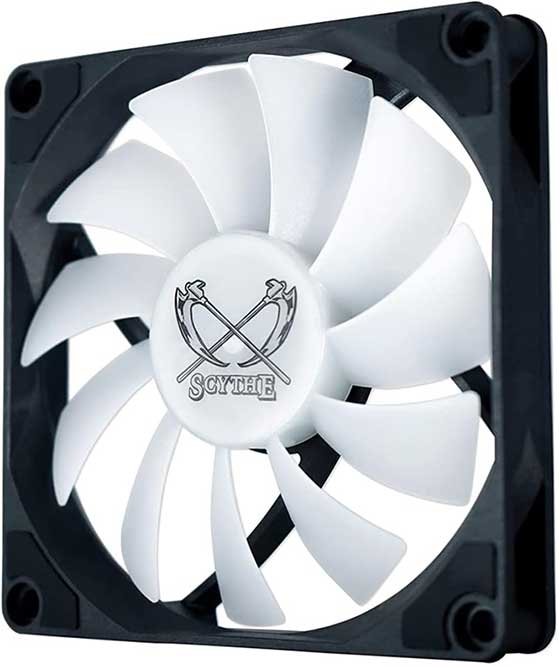
But this fan isn’t all about looks. When we fired up the system and put it through its paces with some gaming, the Scythe Kaze Flex kept things cool without making a ruckus.
Even at full speed, the noise level topped out at 23.2dBA, which is less noise than a whispered conversation. And at lower speeds, it was barely audible. Most likely thanks to the Sealed Precision FDB (Fluid Dynamic Bearing) which ensures silent operation. It also promises a long lifespan – 120,000 hours, to be exact.
Airflow was impressive too. Ranging from 4.96 to 41.3 CFM, it was more than capable of keeping the CPU cool while we tested out the latest games. The balance of performance and noise was just right; it pushed a lot of air without sounding like a tiny jet engine.
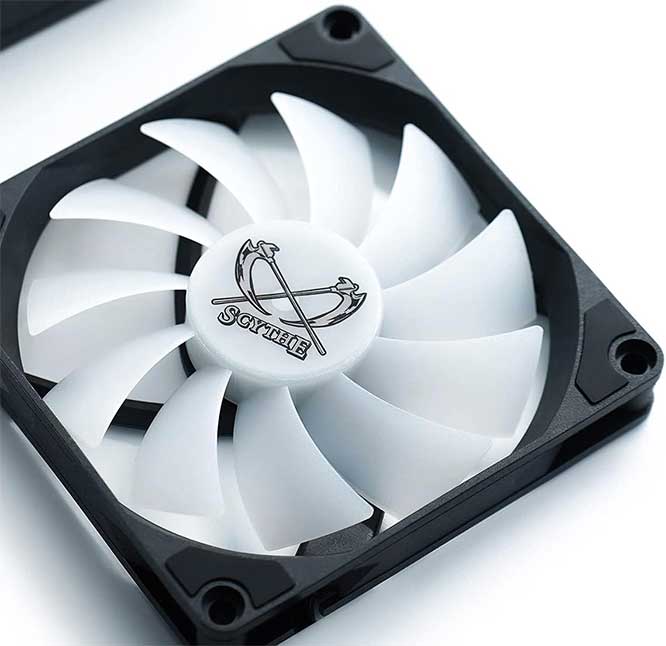
The anti-vibration pads were a neat addition. We didn’t feel a single tremor through the case, indicating that the fan wasn’t just quiet in terms of sound – it was also minimizing vibration.
Using it was straightforward. The 300mm cable, with an additional 200mm extension, meant no struggling to connect it to the motherboard. And for those who love to fine-tune their rigs, the 4-pin connector allowed for precise control over the fan speed.
In essence, the Scythe Kaze Flex is a solid choice for SFF builds or any setup where you want to maintain a balance between aesthetics and function. It keeps your system cool, adds a bit of flair with its RGB lighting, and does its job without causing a disturbance.
92mm Cooling Fans FAQs
What is a 92mm cooling fan used for?
They are used to move heat away from computer components and maintain an optimal operating temperature. These are typically used in smaller cases, CPU coolers, or in any system where space is limited and a compact fan is required.
Are 92mm fans better than larger fans?
They are not necessarily better than larger fans; they are chosen based on space constraints. Larger fans can move more air at lower RPMs, which can be quieter, but a high-quality 92mm fan can provide excellent cooling in smaller spaces.
Can I control a 92mm fan’s speed?
Yes, if the fan has a 4-pin PWM connector, you can control its speed through your motherboard or PWM fan hub controller, allowing it to adjust automatically to your system’s cooling needs.
How do I install them?
Install a 92mm case fan by aligning it with the fan slot on your case or cooler, then secure it with screws or anti-vibration mounts. Connect the power cable to the motherboard or power supply.
Do all 92mm fans have the same connector type?
No, some may have a 3-pin connector which runs at a constant speed, while 4-pin connectors support PWM for speed control.
How important is the airflow rating in a 92mm fan?
The airflow rating, measured in CFM, indicates how much air the fan can move. A higher CFM can lead to better cooling, which is particularly important in compact builds.
What does the bearing type in a fan mean?
The bearing type affects the lifespan and noise level of a fan. Common types include sleeve, ball, and fluid dynamic bearings, each with different performance and noise characteristics.
Meet Ry, “TechGuru,” a 36-year-old technology enthusiast with a deep passion for tech innovations. With extensive experience, he specializes in gaming hardware and software, and has expertise in gadgets, custom PCs, and audio.
Besides writing about tech and reviewing new products, he enjoys traveling, hiking, and photography. Committed to keeping up with the latest industry trends, he aims to guide readers in making informed tech decisions.

